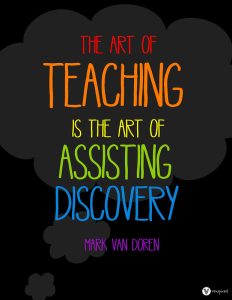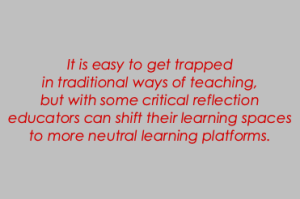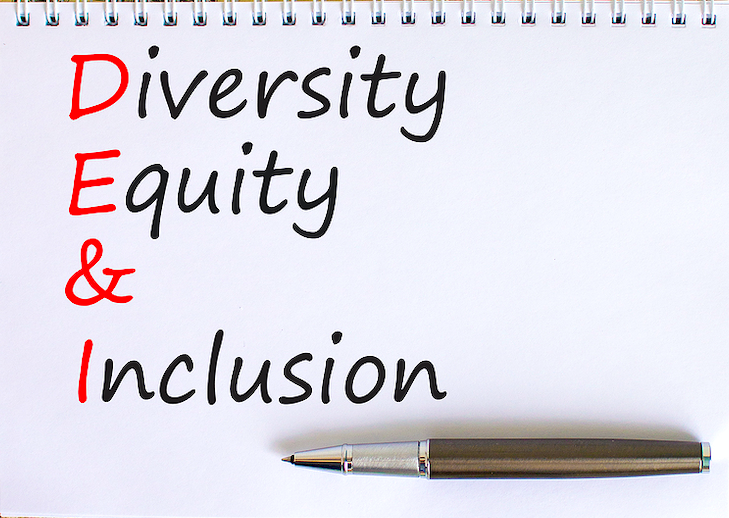I love to teach language learners how to write, from grammar and sentence structure to unity, clarity, and cohesion. As they advance, I ask them to check for rhythm and pacing, delete redundancies, and charge their writing with words that pop from the page into their readers’ imaginations. I show them how to carefully craft their sentences to persuade their audiences. Nothing makes me happier than to see these elements emerge in my students’ papers.
Continue readingCategory Archives: critical thinking
Re-visiting webquest
 In September 2015 I posted a TESL Ontario blog about revisiting WebQuests. Since then WebQuest founder Bernie Dodge closed his WebQuest site as well as its sister WebQuest archive resource QuestGarden. As well, Zunal.com has closed. As WebQuests have been such an established and relevant activity for language teachers and learners, digital alternatives must be found or developed to fill this void.
In September 2015 I posted a TESL Ontario blog about revisiting WebQuests. Since then WebQuest founder Bernie Dodge closed his WebQuest site as well as its sister WebQuest archive resource QuestGarden. As well, Zunal.com has closed. As WebQuests have been such an established and relevant activity for language teachers and learners, digital alternatives must be found or developed to fill this void.
This post offers five alternatives to traditional WebQuest editors. Links to WebQuests created with these tools are also shared. These tools may take more effort to produce WebQuests, but they use contemporary productive technologies and work well on most device types.
What is a WebQuest?
WebQuests are inquiry-based learning activities in which students use information from the web to complete tasks or solve teacher defined problems on issues related to module topics. They typically involve students exploring specific resources provided by the teacher, often in a structured format to encourage deeper understanding and critical thinking on a given topic. To summarize, WebQuests support student learning through problem solving or knowledge building activities.
Why use WebQuests with your classes?
WebQuests promote:
- Students deal with real-world issues and problem solving.
- higher order thinking
- brainstorming activities
- co-operation through group work
- organization through the WebQuest structure
- presentation or debating skills
- WebQuests can be embedded into learning management system.
- No coding is required to assemble a WebQuest.
- WebQuests promote group work.
- Final projects may be transformed into activities or presentations.
- Learners enhance their technology skills by actively engaging with current technologies.
Potential Student Projects
Authors of WebQuests guide their learners to create a final project. This is done in the task section of the WebQuest. These may include:
- web pages
- word processed documents
- videos/audios/animations
- books/magazines
- debates
- display boards
- social media presentations
WebQuest structure
The most common format promoted by Bernie Dodge has been the HTML IFrames format. This is a three parts webpage.
- Title page, at the top of the screen
- Navigation page, on the left of the screen
- Main information page, in the centre of the screen
Many contemporary WebQuests do not follow this format. Some are simple web pages or linear documents while others are slide presentations.
The WebQuest structure is generally consistent.
- The Introduction that introduces the task and provides background information.
- The task description which explains student expectations.
- The process that provides students with the steps to follow.
- The resources that can include books, media, mostly online to help learners with their research.
- The evaluation structure which is normally in the form of a rubric.
- A conclusion that wraps up the WebQuest and encourages student reflection
WebQuests Creating Tools
Here are five ways that you can create WebQuests to provide relevant and engaging. Choose the tool that matches your technical skillset. There are more digital tools out there that you can use to create WebQuests. If you are aware of these, consider contributing a comment below to enrich our teaching and learning community.
- Moodle Books allow instructors to create a WebQuest with a digital book-like format containing multi-page resources and a table of contents of hyperlinks to WebQuest pages. This provides an intuitive navigation for learners. Pages can include embedded multimedia and hyperlinks.
-
- WebQuest example: Moodle Book, https://tinyurl.com/yrtyx6j2
- How to create a Moodle Book WebQuest, https://tinyurl.com/59679dby
- WebQuest created with the H5P course presentation tool provide a horizontal slide based WebQuest. These are intuitive to navigate, can have a navigation menu, and report student engagement to an LMS.
- WebQuest example; H5P, https://tinyurl.com/5e7eetk6
- Google Site creates a webpage WebQuest. The presentation is familiar to learners which allows for intuitive navigation. The site can be accessed by learners separate from an LMS if a school LMS is not available. Only a free Google account is required to create a Google sites WebQuest page.
- WebQuest example: Google Sites, https://tinyurl.com/3d7vjtrv
- How to create a Google Sites WebQuest, https://enjoy-teaching.com/webquest
- PowerPoint is a familiar technology to most learners. In a WebQuest group it is anticipated that one learner will have the ability to navigate the WebQuest with its single click navigation. These can be exported as PDF documents if required by institutions without a Microsoft licence.
- WebQuest example: PowerPoint, https://tinyurl.com/4th3jddd
- WebQuest example: PowerPoint, https://tinyurl.com/4th3jddd
- Microsoft Word is also a technology familiar to most learners. This method of making a WebQuest is targeted at producing a paper or digital document that can be read in a linear fashion from top to bottom These can be exported as PDF documents if a shareable digital document is required.
- WebQuest example: PDF, https://tinyurl.com/bdedvw8j
Final thoughts
Alternate tools for creating WebQuests for student use have been offered with examples. Due to the WebQuests guided assignment format, many digital tools can be used to create WebQuests. You can choose the tool is best for your learners. A good practice is to create your web quest on a word-processed document and then transfer the information to another technology such as H5P.
Want to learn more about creating WebQuests?
Register for the Tutela webinar session
Friday, Feb 21, 2025
7:00 PM ET
Encouraging Critical Thinking in the Classroom

The recent buzzword in second language or foreign language teaching is critical thinking. Studies confirm that promoting critical thinking in the classroom yields long term rewards in terms of helping students to think for themselves, analyze the meaning of language and take ownership for their learning. Moreover, critical thinking enriches the language learning experience and makes it more meaningful.
Critical Pedagogy and Teaching in the 21st Century
By Christine Smart-Wiseman
I have spent over a decade developing my research in community-setting adult ESL classes. I have found the path to empowerment for newcomers somewhat difficult. Students face many obstacles, including discrimination, racism, and the increasing challenges of settling into a country where English is not their first language. I have also realized that my own positionality, as well as the positionalities presented in teaching materials, can compromise students’ abilities to relate and succeed. This means that my own ideas, and the ideas presented in ready-made materials, often reflect the status quo—not the typical adult ESL learner. So, what can we do about this in the classroom? There are two key ways educators can critically reflect on their teaching practices. Continue reading
Learner’s Autonomy! Is it for all learners?

As an ESL teacher with over a decade of progressive teaching experience, no notion in English language pedagogy was as mind–blowing to me as the idea of learner autonomy. The way that learning and learners are seen as autonomous has always resonated highly with me; I always thought if anyone masters independent learning, they can learn almost anything with joy and efficiency. Recently, however, I’ve been thinking differently about this. Not because I am now a skeptic of this approach, but because I have been wondering if all learners want to be independent learners! Based on my recent encounters and experience at work, I now think maybe there are some learners who learn best without being independent. In this blog post, I’d like to share my own experience with this type of learner. Continue reading
Promoting Diversity, Equity, and Inclusion in Class through Critical Texts, Talks, and Tasks
I asked TESL Ontario educators to record their thoughts on the question “What are one or two ways that you incorporate diversity, equity, and inclusion in your teaching practice?” This post shares their recordings (see link below) and synthesizes their responses, which highlight the importance of infusing criticality in classroom texts, talks, and tasks.
Continue readingSocial Media and Critical Literacies
Due to the immense changes in society and the way people communicate in the past 50 years, communication methods are now multimodal, and people need literacy skills that go beyond books. As Tarc (2013) writes, “In our current multicultural societies, it is hard to identify one’s identity and their understanding and background, in order to avoid possible misunderstandings,” (p. viii) and such considerations need to take place now that global migration is at its highest and daily interactions occur with people from different countries than ourselves. Whether or not people have experienced migration and/or immigration personally, many of the people they interact with on a daily basis are likely to have been born somewhere else; even without this interaction, the accessibility to the internet means that no one is isolated in their own “corner” of the world. Digital and print media tools can be used by educators to help students develop critical literacies skills, so that they can be more participatory and contemplative global citizens.
Continue readingCritical Thinking Skills as Easy as 1-2-3

The numbers 1-2-3 stand for the formula I devised to teach students to develop and demonstrate Critical Thinking Skills. By following the 1-2-3 formula, I teach students to think about their choice of answers. I came up with this strategy as part of my efforts to teach first year college students to answer reading comprehension questions. Historically, I have found that short-answer questions tend to ask students to answer in one or two sentences, which, I think, limit students’ ability to demonstrate critical thinking skills. One or two sentence responses do not really encourage students to explain how they arrive at the answer. The result is usually an answer that can either be easily found in the text or must mirror what the instructor expects the answer to be. Continue reading
Learning the Art of Critical Pivoting

Guest Contributor: Christine Smart-Wiseman
Like many others in the field, I am always looking for new ways to improve my teaching. My research as a PhD student at York University led me to examine teaching from a critical pedagogical approach. The guiding principle of this approach is to construct equitable and democratic classrooms with a goal to positively transform students’ lives (Canagarajah, 2005).
While I was doing my research in an ELL classroom, I uncovered many ways in which ELL environments contradict the goals of critical pedagogical approaches. In many cases, planning and preparing ahead to foster a classroom environment that supports critical learning can overcome these challenges, but at times, there may be a dynamic need to shift classroom spaces towards empowering teaching and learning. I have developed a strategy I call critical pivoting to address this problem and would like to share it with you.
#CdnELTchat Summary for June 1, 2021 Self Directed Professional Development with Anna Bartosik
Post by Jennifer Chow
#CdnELTchat was happy to have Anna Bartosik (@ambartosik) share her expertise on Self-Directed Professional Development (SDPD) on June 1. Anna is an English language teacher at George Brown College, instructional designer, and PhD Candidate at OISE. Her research is in self-directed professional development in digital networks. Learn more by reading her blog: https://annabartosik.wordpress.com/.
Before we started our discussion, we had a moment of silence to mourn and remember the #215children in Kamloops. #CdnELTchat is also taking time to reflect and plan a future chat with #teslONchat later this month to talk about what we need to do in order to move forward with the 94 Calls To Action from the Truth and Reconciliation Commission, and work for #Reconciliation.
Continue reading




